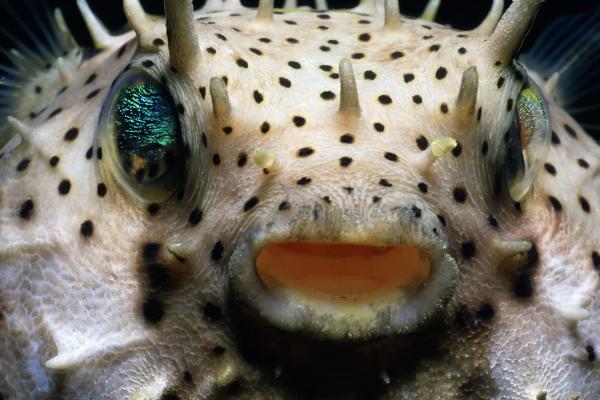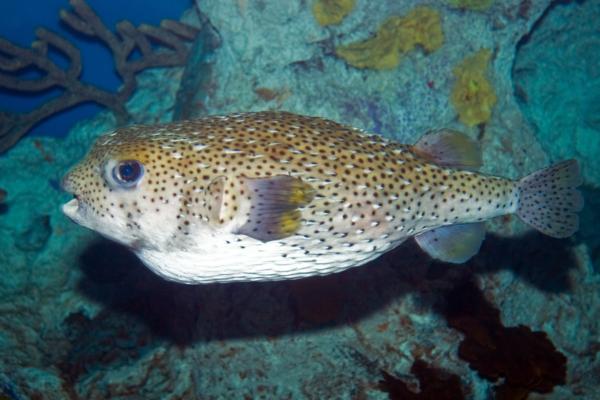When it comes to fascinating and extraordinary creatures in the natural world, few are as unique and mysterious as the pufferfish. Known for their ability to inflate into a ball when threatened and for possessing one of the most potent toxins in the animal kingdom, pufferfish are truly remarkable animals. In this article, we’ll explore the key features, habitat, feeding habits, and ecological importance of pufferfish, while also debunking some common myths about these spiny swimmers.

The most iconic characteristic of the pufferfish (Family: Tetraodontidae, commonly Tetraodon species) is its ability to inflate rapidly when in danger. Thanks to a highly flexible stomach, a pufferfish can gulp large amounts of water (or sometimes air), transforming itself into a spiky, balloon-like shape. This makes it difficult for predators to swallow them or even fit them into their mouths.
Other notable features include:
Bright warning colors: Many species have vivid blues, yellows, or contrasting patterns to warn predators of their toxicity. Others are camouflaged in earthy browns and greens.
Skin covered in spines: When inflated, many pufferfish display sharp spines that further deter predators.
Rough, scaleless skin: Most pufferfish lack scales and have a rough, leathery texture to facilitate rapid inflation.
Aggressive nature: Adult pufferfish tend to be solitary and can display territorial or aggressive behavior, especially toward other pufferfish.
Wide range in size: Species range from as small as 2.5 cm to giants reaching up to 60 cm or more in length.
Pufferfish are infamous for their potent toxin – tetrodotoxin – which is one of the deadliest neurotoxins in the animal world. Just one pufferfish can contain enough toxin to kill up to 30 adult humans. The toxin is mainly found in the liver, skin, and reproductive organs, and even touching a pufferfish can pose risks.
Symptoms of poisoning include:
Dizziness and tingling
Loss of coordination
Muscle paralysis
Respiratory failure
Death in severe cases
Interestingly, this toxin not only deters predators but also gives the fish a bitter taste, reinforcing the avoidance behavior of would-be attackers.
Despite the danger, pufferfish is considered a delicacy in Japan (“fugu”), but it can only be prepared by specially trained and licensed chefs. Even then, fatalities still occur from accidental poisoning.
Pufferfish are widely distributed in warm, tropical, and subtropical waters around the world, but avoid cold seas. They are capable of living at depths of up to 300 meters.
Versatile environments: Some species inhabit freshwater rivers, lakes, and streams, while others are found in brackish waters such as estuaries and mangroves.
Most common in Asian coral reefs: Coral reef ecosystems, particularly in Asia, are home to a great diversity of pufferfish.
Also found in rivers and lakes: Several species have adapted to non-marine environments.

Pufferfish are opportunistic feeders with a diet that includes a variety of small animals and plant matter.
“Beak”-like teeth: Pufferfish have four strong, fused teeth that form a beak, enabling them to crush the shells of mollusks, crabs, and other hard-shelled prey.
Varied diet: Small pufferfish feed mainly on algae and plankton, while larger individuals can eat other fish, crustaceans, and even mollusks.
Using toxin for hunting: Some pufferfish use their toxins to immobilize larger prey before consumption.
Although male and female pufferfish appear similar, their courtship is unique. Males create intricate circular “sand art” patterns or small mounds on the seafloor to attract females and demonstrate their suitability as a mate. Eggs are laid on rocks or plants, and the male guards them until they hatch, typically within a week. Once hatched, the fry feed on microscopic plankton.
Ecosystem role: Pufferfish contribute to maintaining the balance of coral reefs and mangrove systems by controlling invertebrate populations.
Human interaction: They are prized both as a delicacy (when safely prepared) and as ornamental fish in the aquarium trade. Overfishing and habitat destruction, however, threaten certain pufferfish species.

Conclusion
Pufferfish are remarkable for their defense mechanisms, potent toxins, and important ecological roles. By understanding more about pufferfish, we can better appreciate their place in aquatic ecosystems and the need to protect their habitats.
Bibliography
Parisse, G. (2016). The Big Book of Tropical Fish. Vecchi Publishing: Ireland.
Heymann, D. (2005). The Control of Communicable Diseases. Pan American Health Organization: Washington, D.C.
animal tags: Pufferfish
We created this article in conjunction with AI technology, then made sure it was fact-checked and edited by a Animals Top editor.